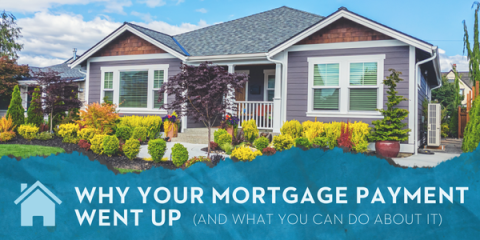Published on November 16, 2023
What Goes Into a Mortgage Payment?
Written by The Servion Group
You may be surprised to learn that your monthly mortgage payment doesn’t go 100 percent toward paying down your loan. There are actually four parts to your payment: Principal, Interest, Taxes, and Insurance (known in the industry as PITI). Here’s how these four different things play a role in your monthly payment.
Principal (P):
Your principal is the amount you owe. For example, if you buy a house for $300,000 and put 20 percent down, you would borrow $240,000. At the beginning of your loan, your principal is $240,000. That amount goes down slowly over time as part of your payments keep getting applied to the principal.
Interest (I):
When you take out a mortgage, the company lending you the money charges interest. Basically, the lender isn’t letting you borrow their money for free; you must pay them for it, and the label for that payment is “interest.” At the beginning of your mortgage, a large percentage of your payment goes toward interest. Over time, less goes to interest and more goes to principal.
Taxes (T):
Once you buy a house, the local government assesses property tax every year. Rather than write a single, big check for the taxes, most borrowers pay them as part of the monthly mortgage payment. The payments are held in an escrow account, and then when the taxes are due, the lender pays them using the money in the escrow account.
Insurance (I):
Every house needs to be insured. Homeowners insurance provides financial protection in case the house is damaged by fire, wind, hail, a tree falling on the house, and various other hazards. You may also be required to buy flood insurance, depending on where the house is located. You obtain insurance by talking to your insurance agent and purchasing a policy. Like taxes, a portion of your monthly payment goes toward your annual insurance premium and is put in the escrow account. The lender then pays the premium every year.
Other Fees Within a Mortgage Payment
PITI may not be everything that goes into your payment:
- Private Mortgage Insurance (PMI): If you put less than 20 percent down, you’ll need to pay PMI. Lenders charge PMI to protect themselves in case you don’t make your payment; if you don’t pay, the PMI policy will pay the lender. PMI varies but is often 0.5 to 2 percent of your principal. For example, a 0.5 percent PMI payment on a $180,000 loan would add $900 per year, or $75 per month, to your payment.
- Homeowners Association (HOA) Fees: If you buy a condo, townhouse, or a home in a certain area, you may need to pay HOA fees. These go towards maintaining the property and shared facilities within the community. HOA fees vary widely but could be anywhere from $50 to hundreds per month.
-
Trending Categories


